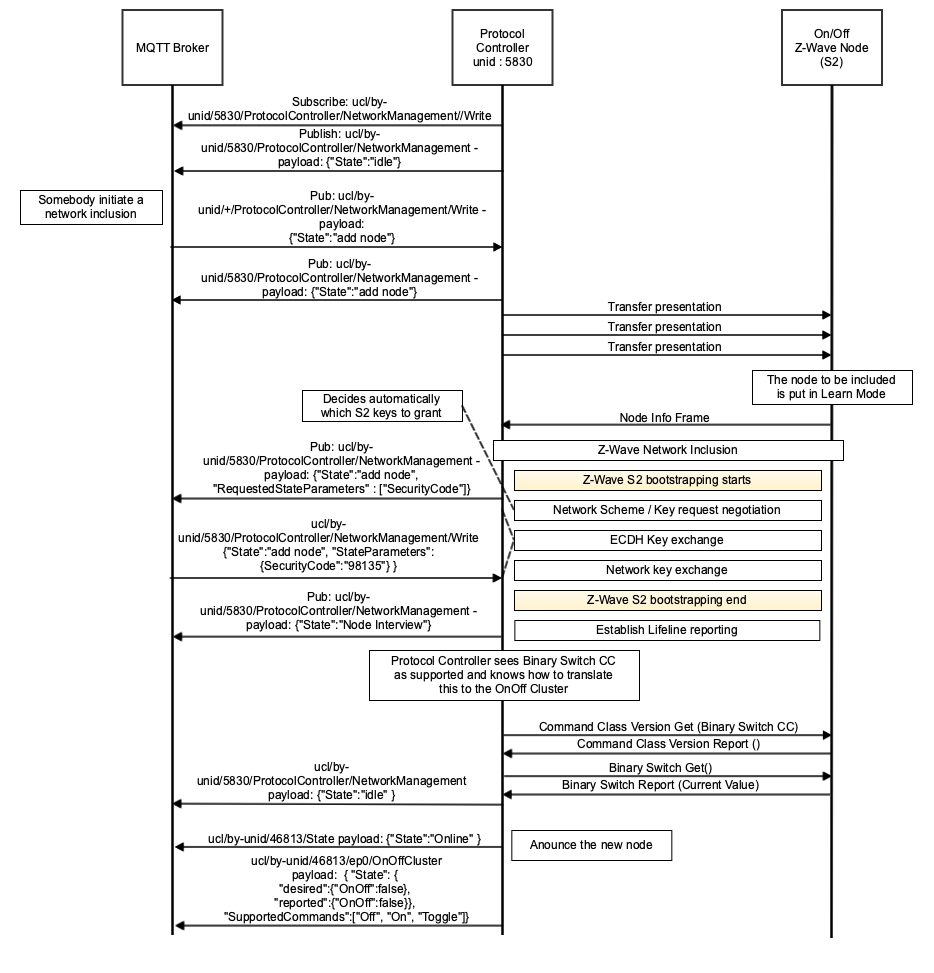4. Scenario Mapping to Specific PHYs: Z-Wave
This chapter describes use-cases or scenarios using the same Unify commands but showing the Protocol Controller translation details for several PHYs.
4.1. Adding a Node to a Network
This use case explains how to include a new node into a network. It is assumed that the implementations follow the lines described in Network Management Commands and Service discovery.
4.1.1. Z-Wave PAN

Figure 4.1 Adding a node with a Z-Wave PAN